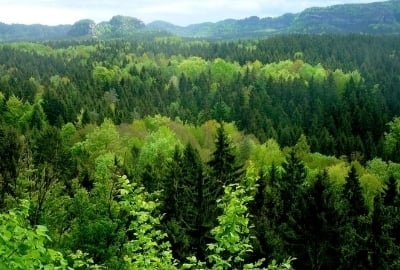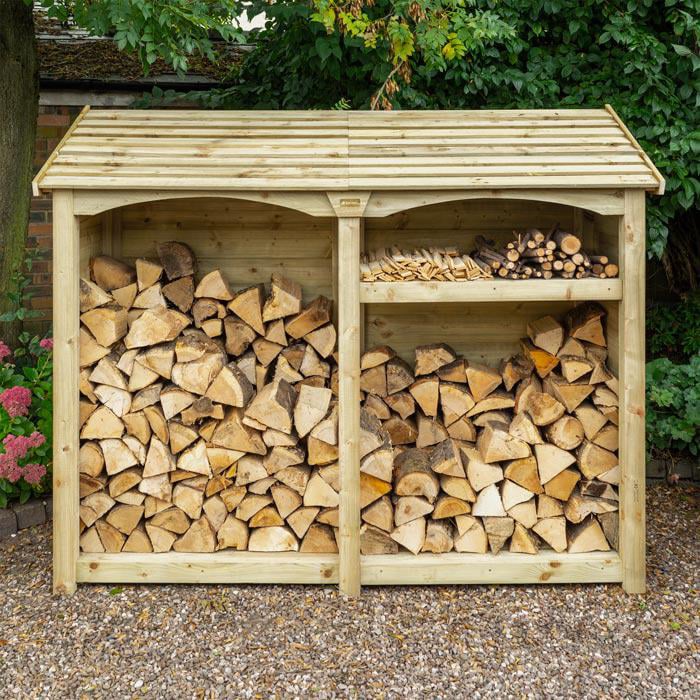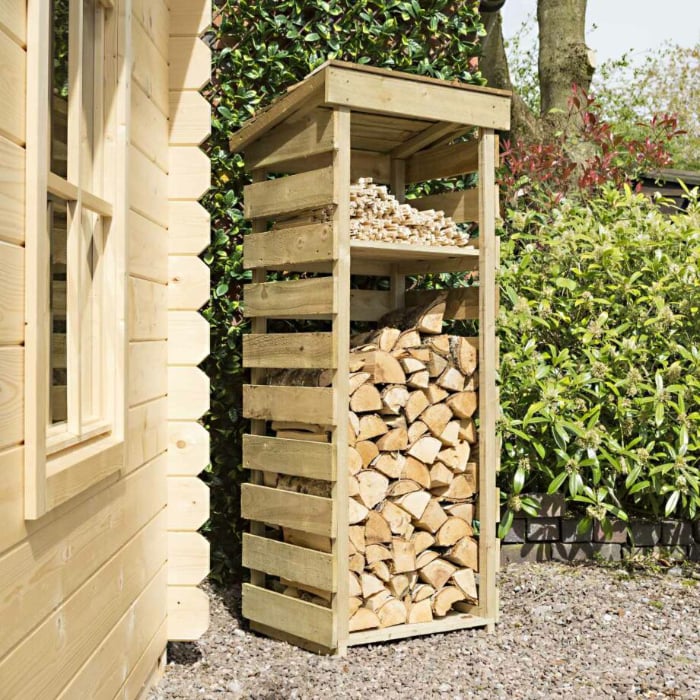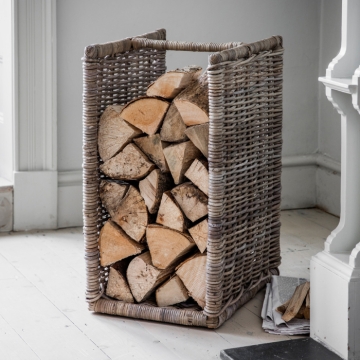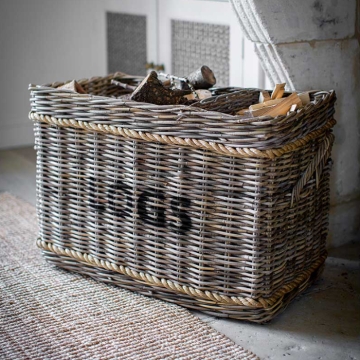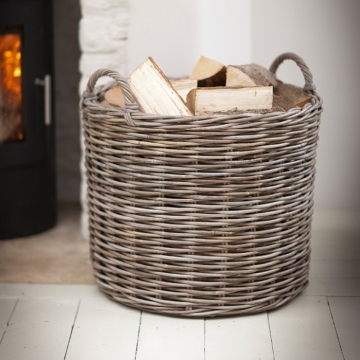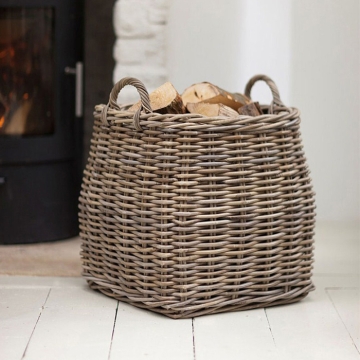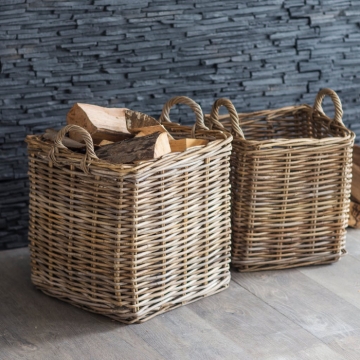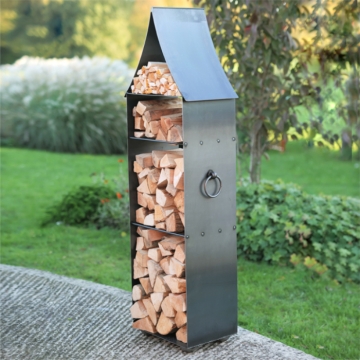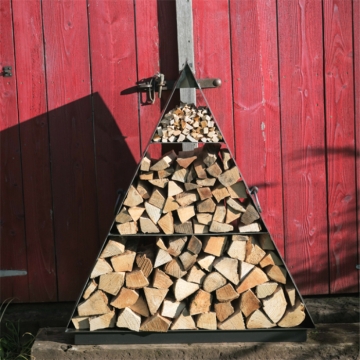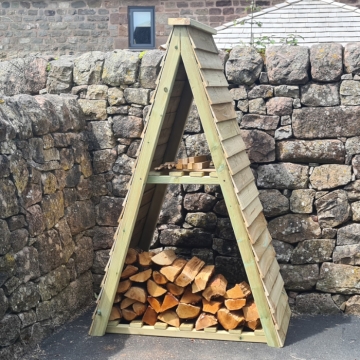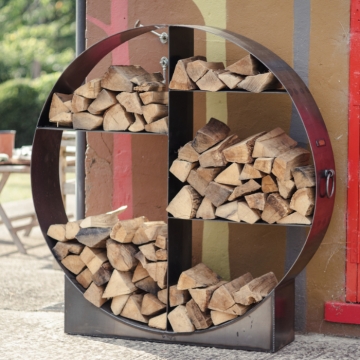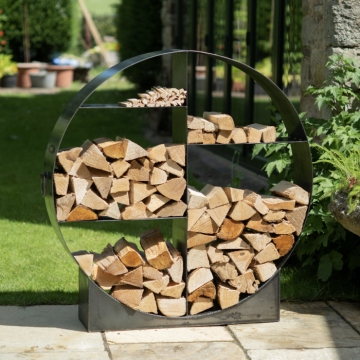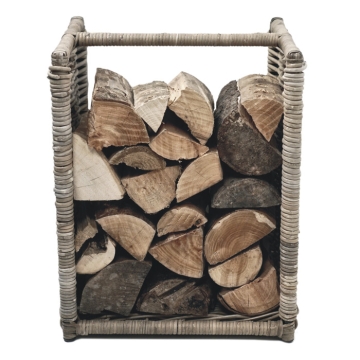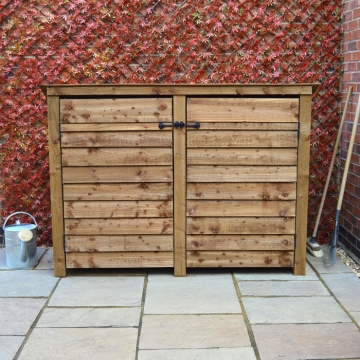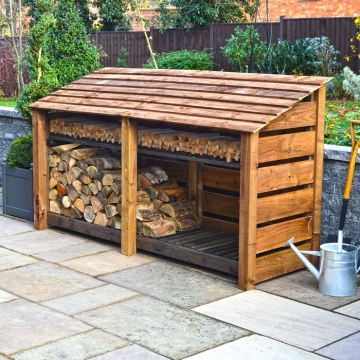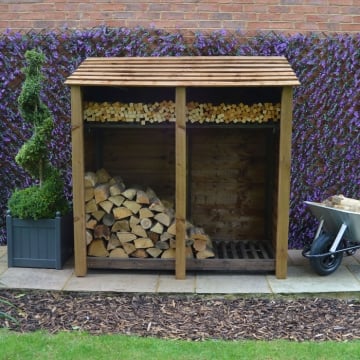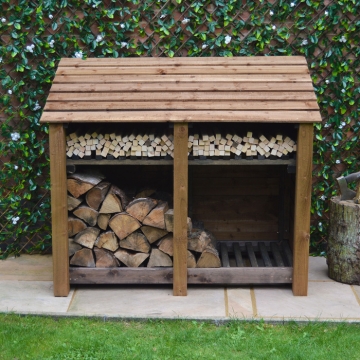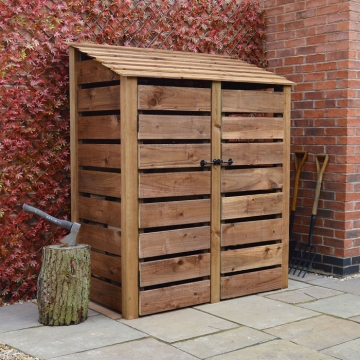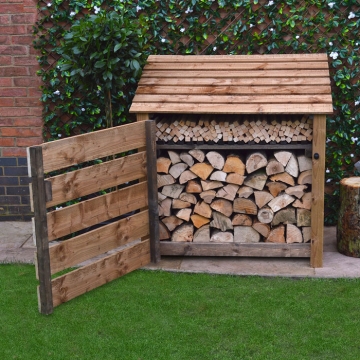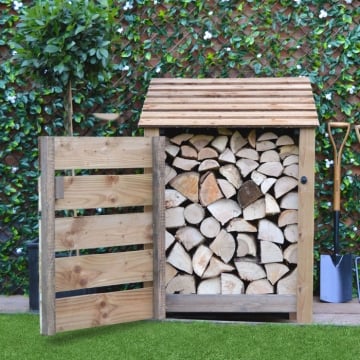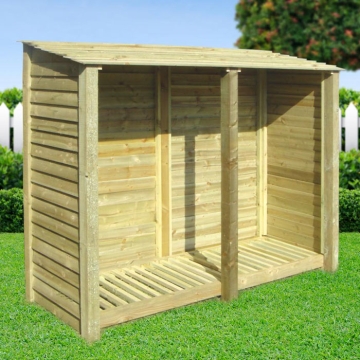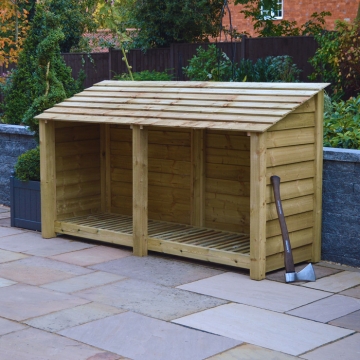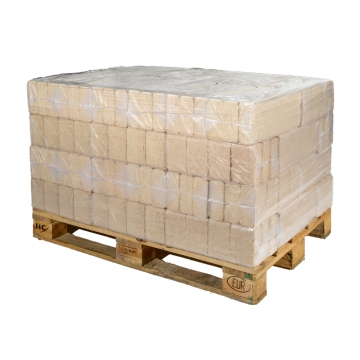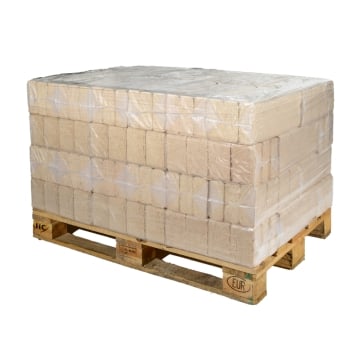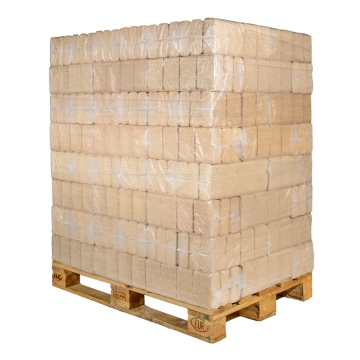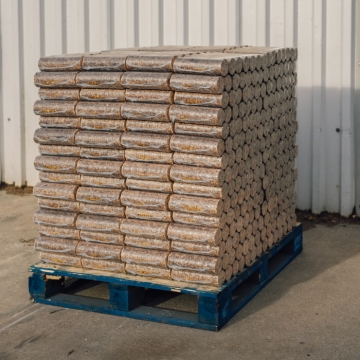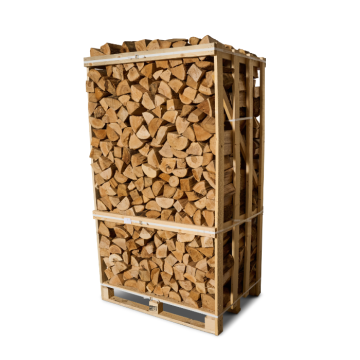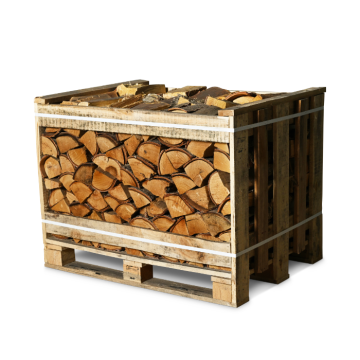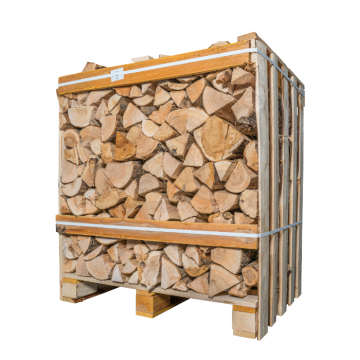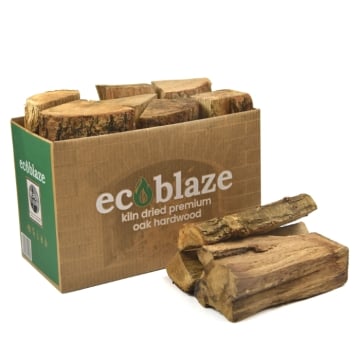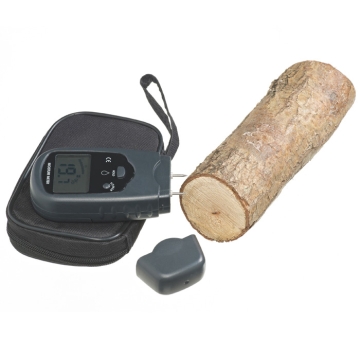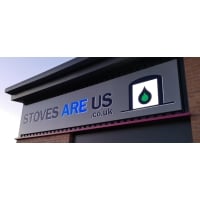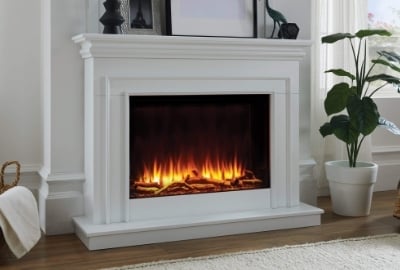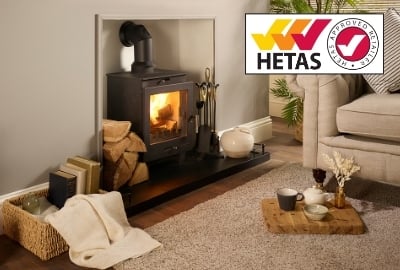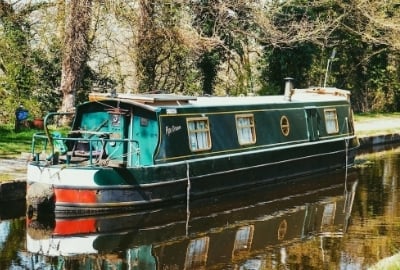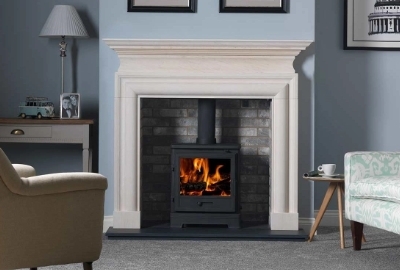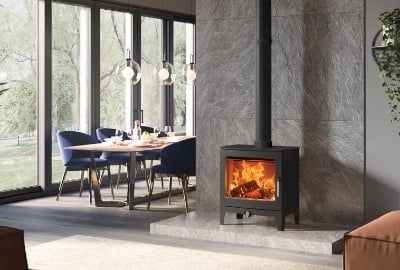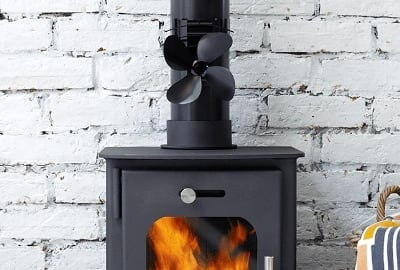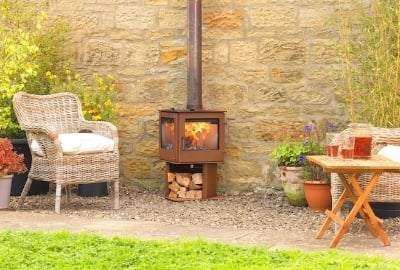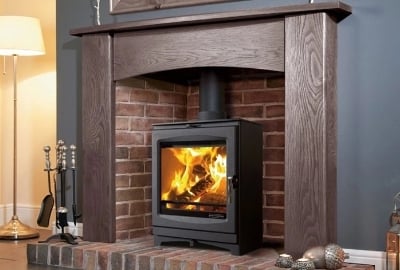A crackling fire in your wood burner not only provides warmth but also sets a cosy atmosphere. However, the type of wood you choose significantly impacts your fire's performance and overall experience. Different tree species possess unique qualities that influence their burning properties, heat output, and even the aroma they release. In this edit, we’ll delve deeper into some of the best firewood options for your wood burner and understand what sets them apart.
Contents
Which type of wood should I burn on my stove?
How should I store my firewood?
Do wood briquettes burn well on a log burner?
A guide to tree types and how well they burn
Which type of wood should I burn on my stove?
We’re often asked “Which is the best wood to burn” and the simple answer is well seasoned firewood with 20% or less moisture. You should also check your appliance manufacturer's instructions for specific guidance for your appliance. Using unseasoned firewood in a stove will likely blacken up the flame viewing window, cause tarring and creosote build-up within your chimney and reduce the life expectancy of your wood burner. Denser woods like oak and beech provide longer burn times and greater heat output, ideal for extended warmth. Softwoods are more suited for kindling and starting fires or when you need a quick heat boost.
Another factor for you to consider when buying your firewood is trying to opt for wood readily available in your region, this helps to reduce transportation costs and environmental impact, contributing to sustainable practices. Here is a small sample of some of the different wood types you could consider using on your stove.
Hardwoods: The Long-Burning Powerhouses
- Oak: As a time-tested favourite, oak wood boasts high density and slow-burning properties, making it a reliable source of sustained heat. Its widespread availability adds to its appeal. However, be prepared for a bit of a challenge when splitting oak, and ensure it is well-seasoned before burning.
- Ash: Highly regarded for its ease of splitting and consistent burn, ash wood delivers impressive heat and leaves minimal ash residue. This makes it a practical and tidy choice for your wood burner.
- Beech: Beechwood provides a long-lasting, slow burn coupled with significant heat output. It also releases a delightful aroma, enhancing the overall ambience. However, like oak, green beech can be tough to split, emphasising the importance of proper seasoning.
- Birch: Birchwood ignites readily and burns with a cheerful flame, emitting a pleasant fragrance. It's a fantastic option for kindling or creating a cosy atmosphere. However, keep in mind its relatively quick burn time and moderate heat output.
- Maple: Striking a good balance between heat output and burn time, maple wood offers versatility. It's also relatively easy to split and lights without much fuss, adding to its convenience.
Softwoods: Quick Blazes and Specific Applications
- Pine: Abundant and easy to ignite, pine wood is a common choice for kindling and starting fires. However, its rapid burn rate and potential for smoke and creosote buildup (if not well-seasoned) mean it's not ideal for sustained heat.
- Spruce: Sharing similarities with pine, spruce wood is also quick to ignite and burns fast. It serves its purpose well as kindling or for a quick burst of warmth, but hardwoods are preferable for long-lasting fires
Whichever firewood you choose to burn on your log burner you should always instruct a chimney sweep to regularly inspection your flue or chimney, this is paramount for safe wood burning.
How should I store my firewood?
To store firewood properly there are several tips and best practices including stacking it correctly, keeping it dry and allowing circulation around the fuel to help ensure the moisture content keeps below 20%.
Using a slatted roof log store is one of the most common and best ways to keep your fuel dry throughout winter. If you have the space for a log store try to locate it 3 metres or more away from your property and find a sunny spot where driving winds will have a hard time blowing rain inside it. A log store will elevate your firewood off the ground allowing air to circulate around the wood and help it dry out. Doubling up a log store with an indoor log basket or firewood box is a great combination, a storage container that allows you to bring dry firewood inside your house means the wood you’re about to use will get some additional drying out time.
Do wood briquettes burn well on a log burner?
If you’re tired of constantly getting up to feed your burner and want to keep your room warm for longer then wood briquettes are the perfect set-and-forget solution for your stove! Some briquettes can keep your rooms warm for up to 8 hours with minimal tending. They’re compatible with almost all wood burning stoves and in some instances can burn four times as long as other wood fuels. By starting to use renewable wood briquettes you could reduce your overall wood fuel consumption saving time, money, and storage space. Our wood briquettes are produced from 100% sustainably sourced softwood bark and delivered in stackable, easy-to-store boxes.
A guide to tree types and how well they burn
Alder – Generally provides poor heat output and does not last very long.
Apple – Has a steady slow burn when the wood is dry, good heat output with small visible flame with a pleasant odour.
Ash – Excellent burning wood, gives great heat and flame output, and also burns when green. The best heat output is gained when the wood is dry.
Beech – Good heat output but only fair when the wood is green. The wood is prone to shoot embers whilst burning.
Birch – The heat is good but the wood burns quickly, however, a pleasant odour is produced.
Cedar – Produces little flames but great heat and a wonderful odour. Provides a splendid noise when burned.
Cherry – A slow-burning wood that produces good heat and a pleasant odour.
Chestnut – Produces small flames and nominal heat, This wood is also prone to shooting embers.
Douglas Fir – Poor. Little flame or heat.
Elder – Generates a lot of smoke and burns very quickly, coupled with not much heat.
Elm – Commonly offered for sale. To burn well it needs to be kept for two years. Even when dry it is liable to smoke.
Eucalyptus – Good dense hardwood, should be properly seasoned before use, but will produce good heat.
Hazel – Good.
Holly – Good, will burn when green, but best when kept a season to dry out fully.
Hornbeam – Comparable in many aspects to Beech.
Laburnum – Poisonous tree, acrid smoke, taints food and is best avoided altogether.
Larch – Crackly, scented, and fairly good for heat.
Laurel – Has a brilliant flame.
Lime – Poor. Burns with dull flame.
Maple – Good.
Oak – Oak does not produce a very good flame and the smoke is acrid, but dry old oak is excellent for heat, burning slowly and steadily until the whole log collapses into ash.
Pear – Provides good heat combined with an extremely pleasant scent.
Pine – Burns with a splendid flame, but is liable to spit.
Plane – Burns pleasantly, but is naturally given to throw sparks if very dry.
Plum – Good heat and aromatic.
Poplar – Not recommended.
Rhododendron – The thick old stems, being very tough, burn well.
Robinia (Acacia) – Burns slowly, with good heat, but is unfortunately accompanied by acrid smoke.
Spruce – Burns at an extremely fast rate and creates many sparks.
Sycamore – Burns with a good flame, with moderate heat. Useless green.
Thorn – Quite one of the best woods. It Burns slowly and produces great heat with very little smoke.
Walnut – Good, and so is the scent. A very aromatic wood.
Willow – Poor. In a dry condition burns slowly, with little flame. Liable to spark.
Yew – Last in the list but by no means least. It has a slow burn with great heat and also has a pleasant scent.
By selecting the right firewood and practising responsible burning habits, you can relish the cosy comfort and captivating ambience of a wood fire throughout the colder months. Remember, the perfect firewood choice is a combination of personal preference, availability, and the specific needs of your wood burner.

